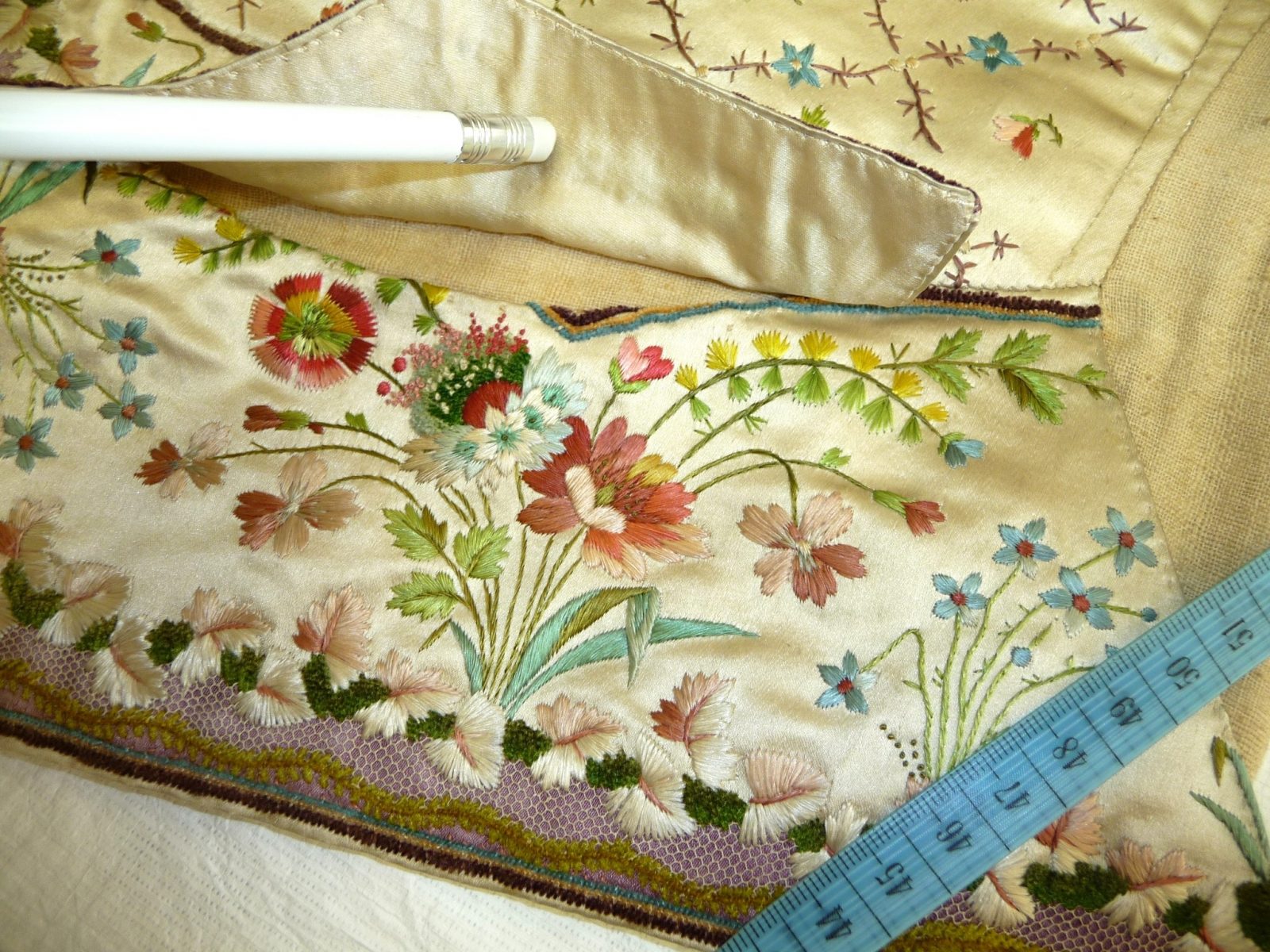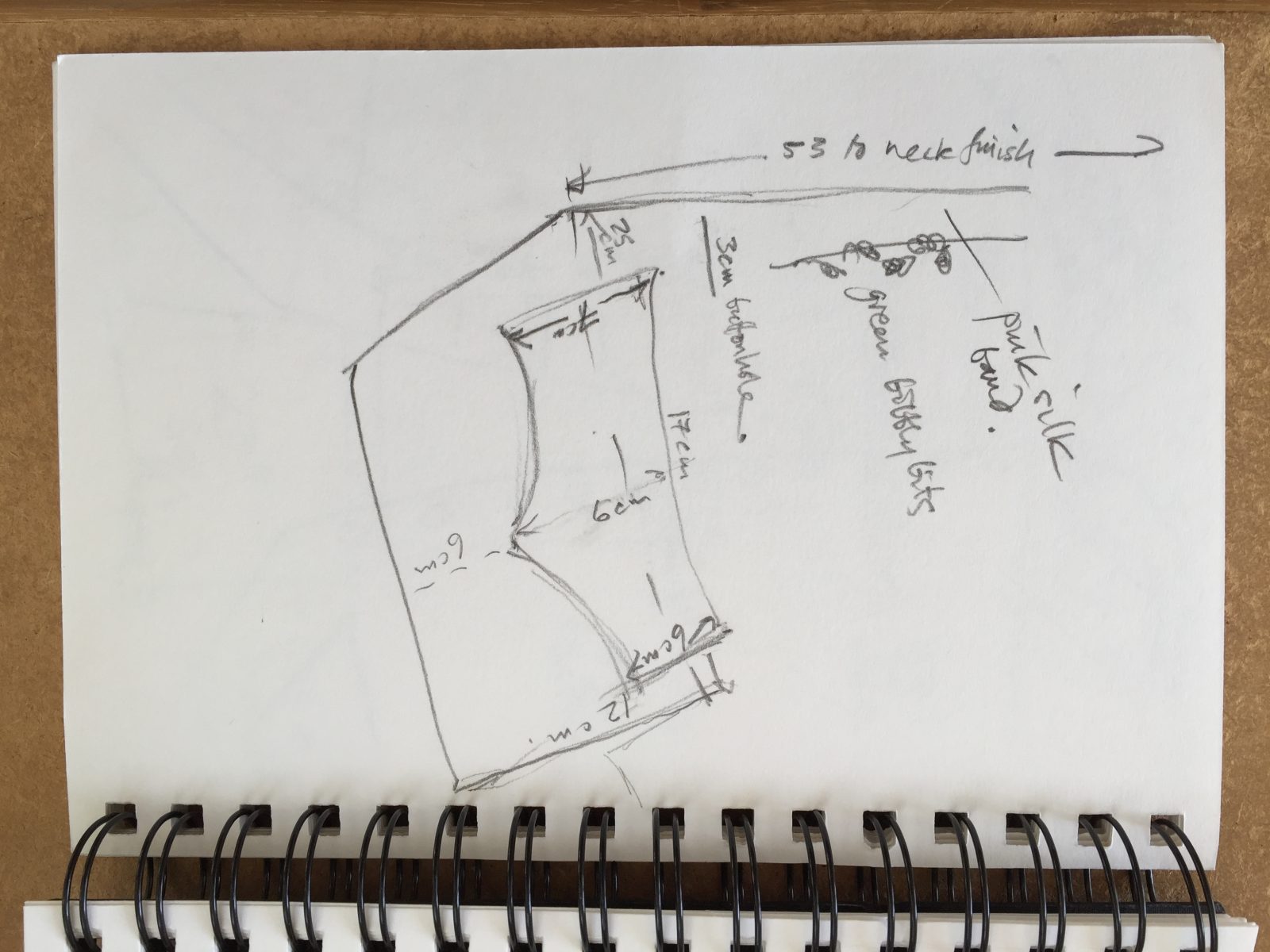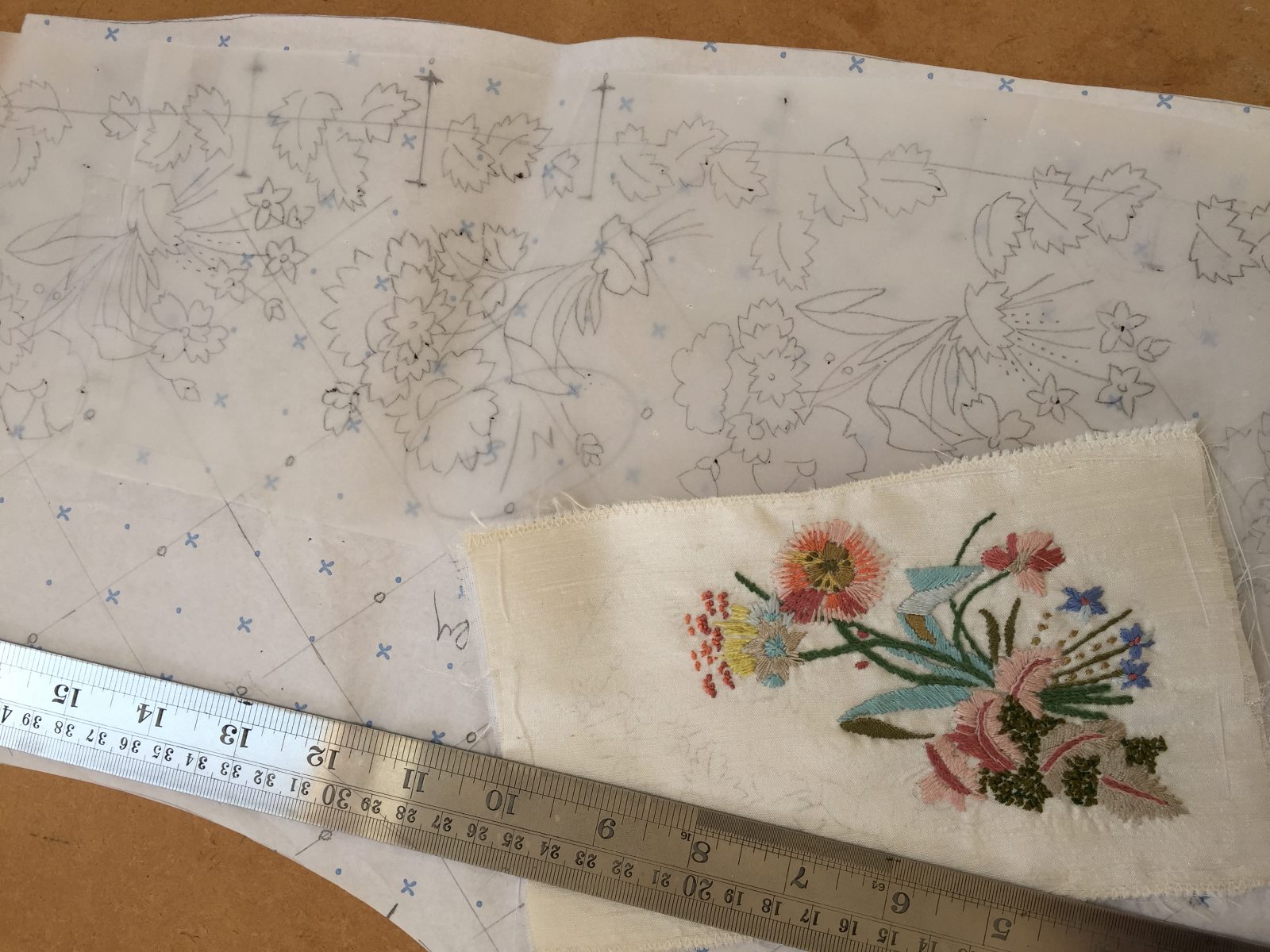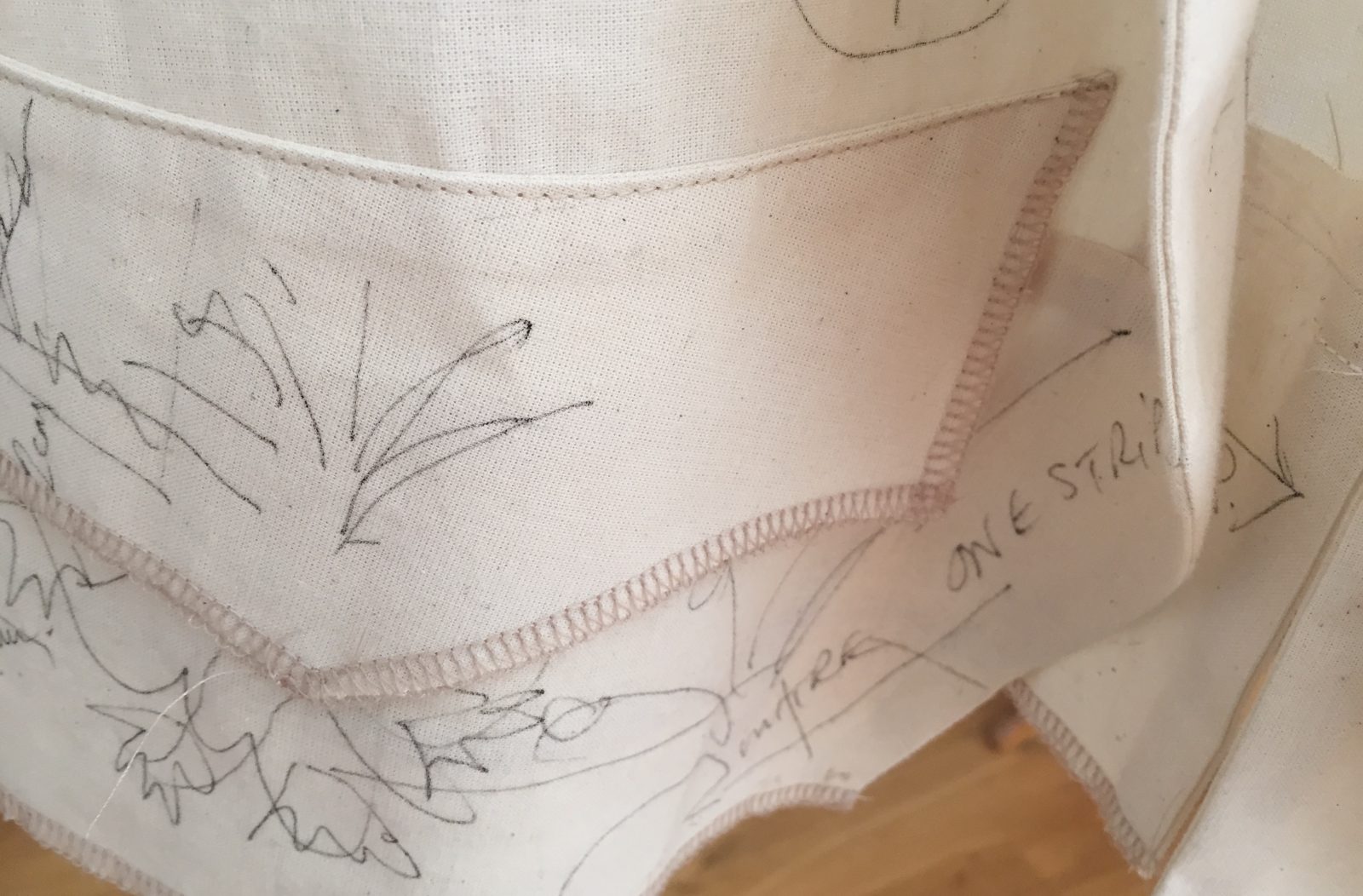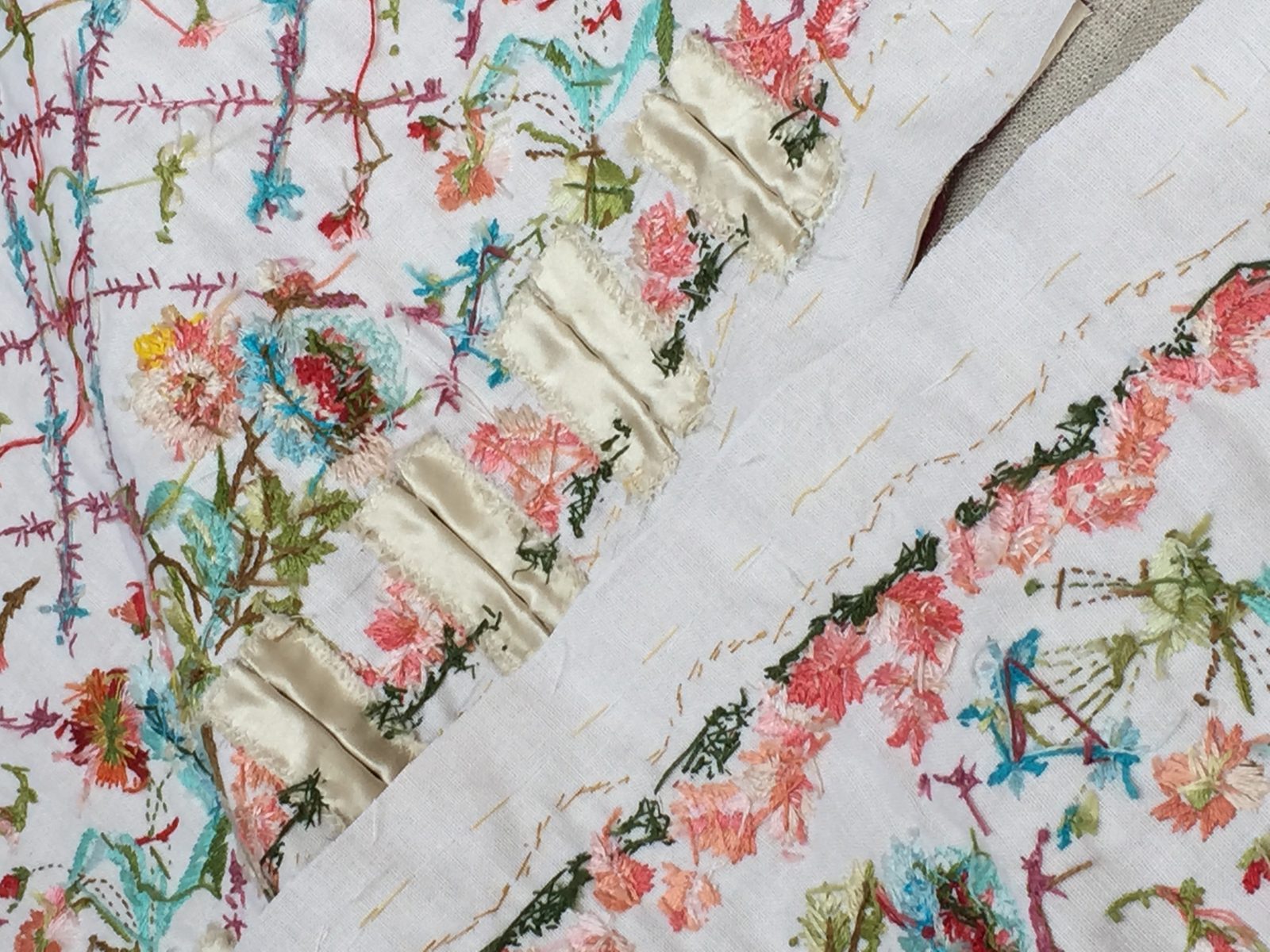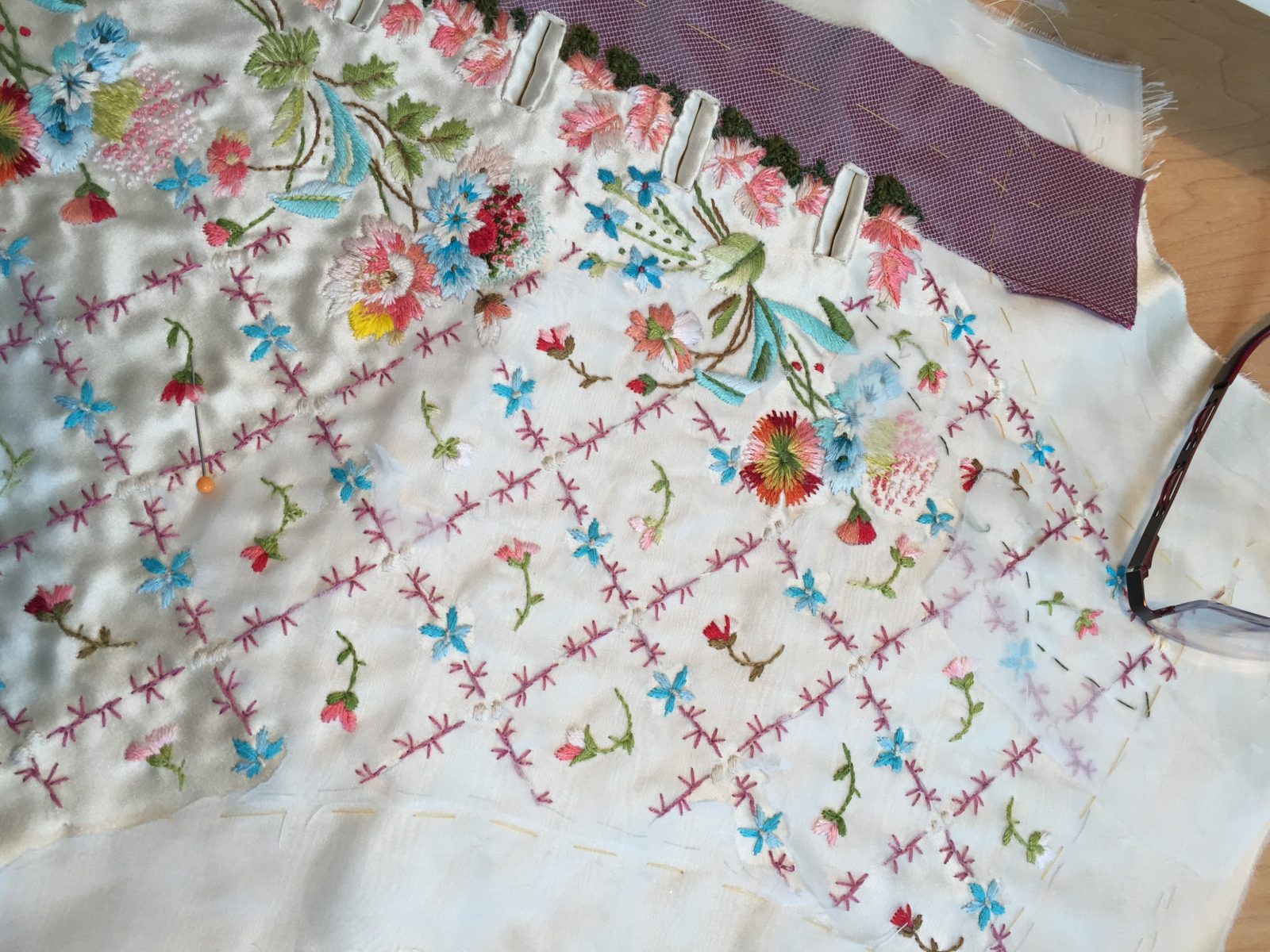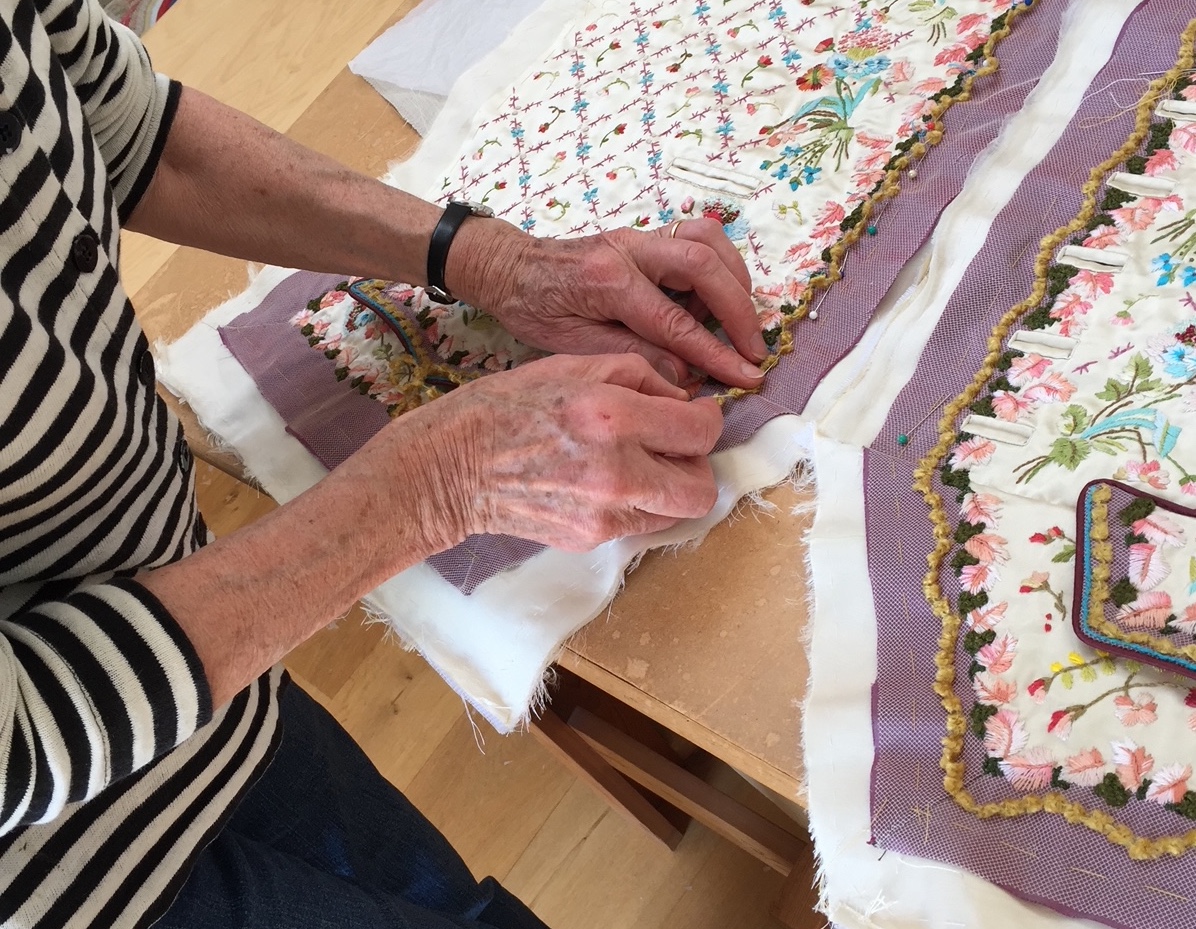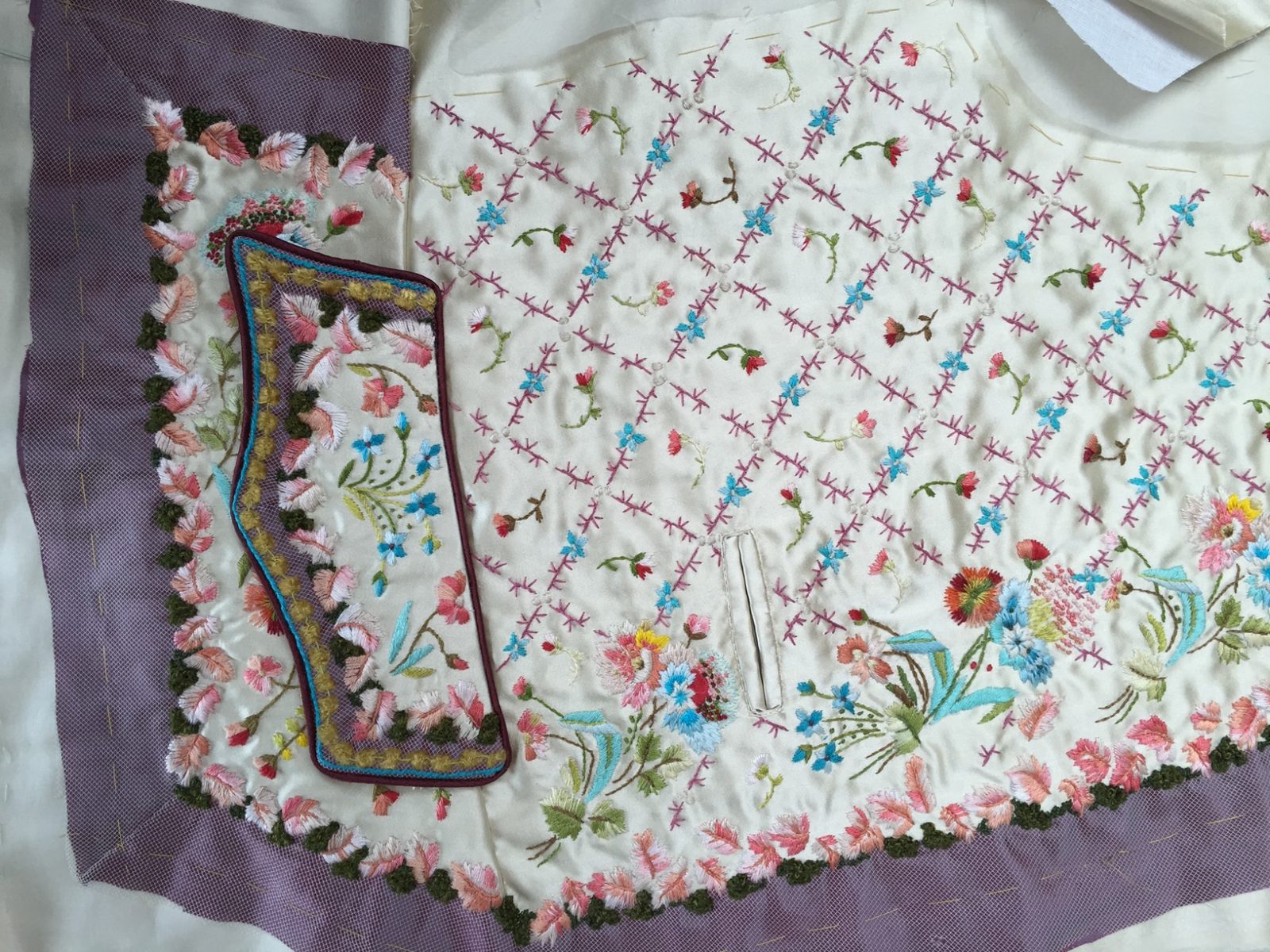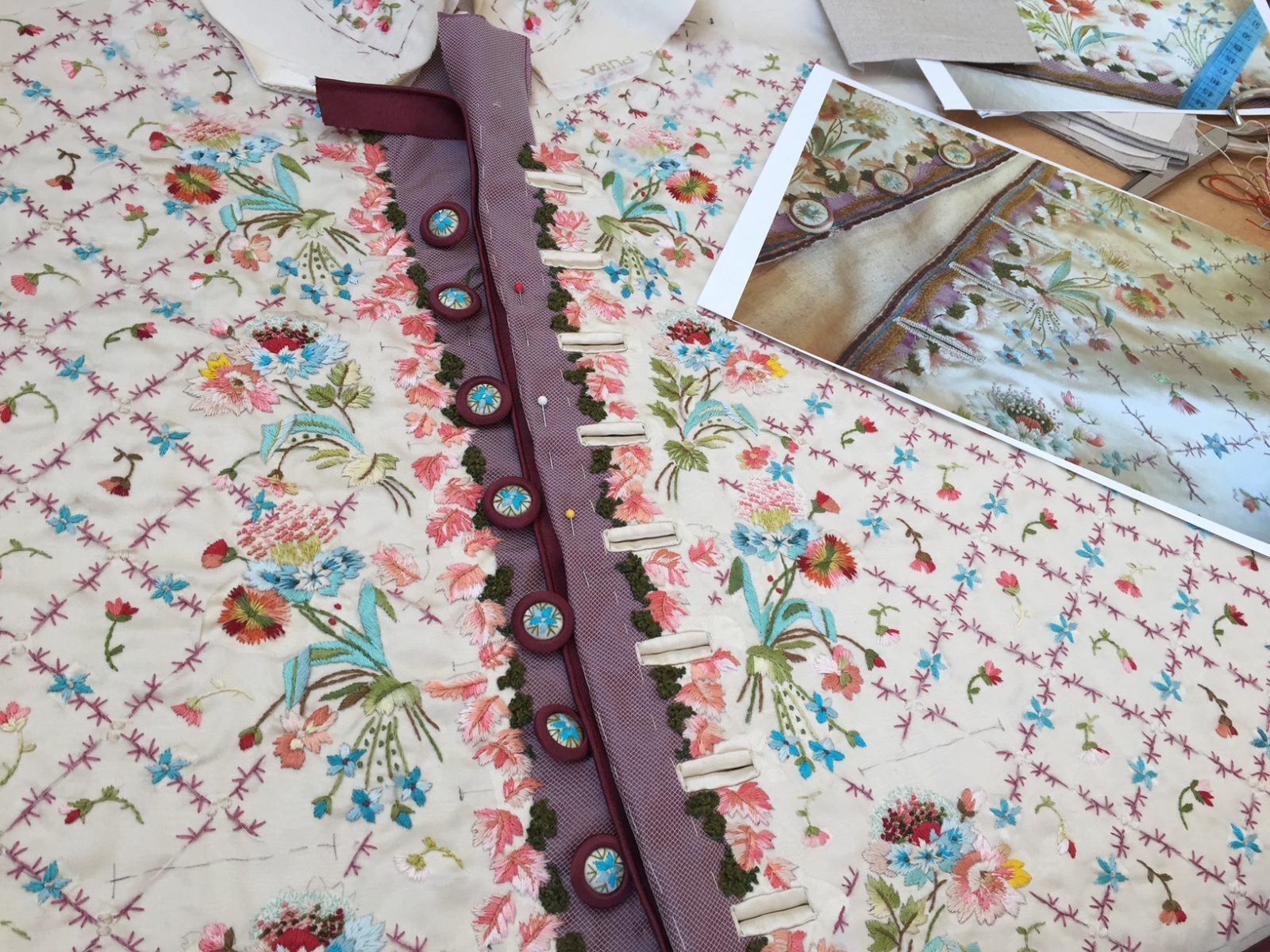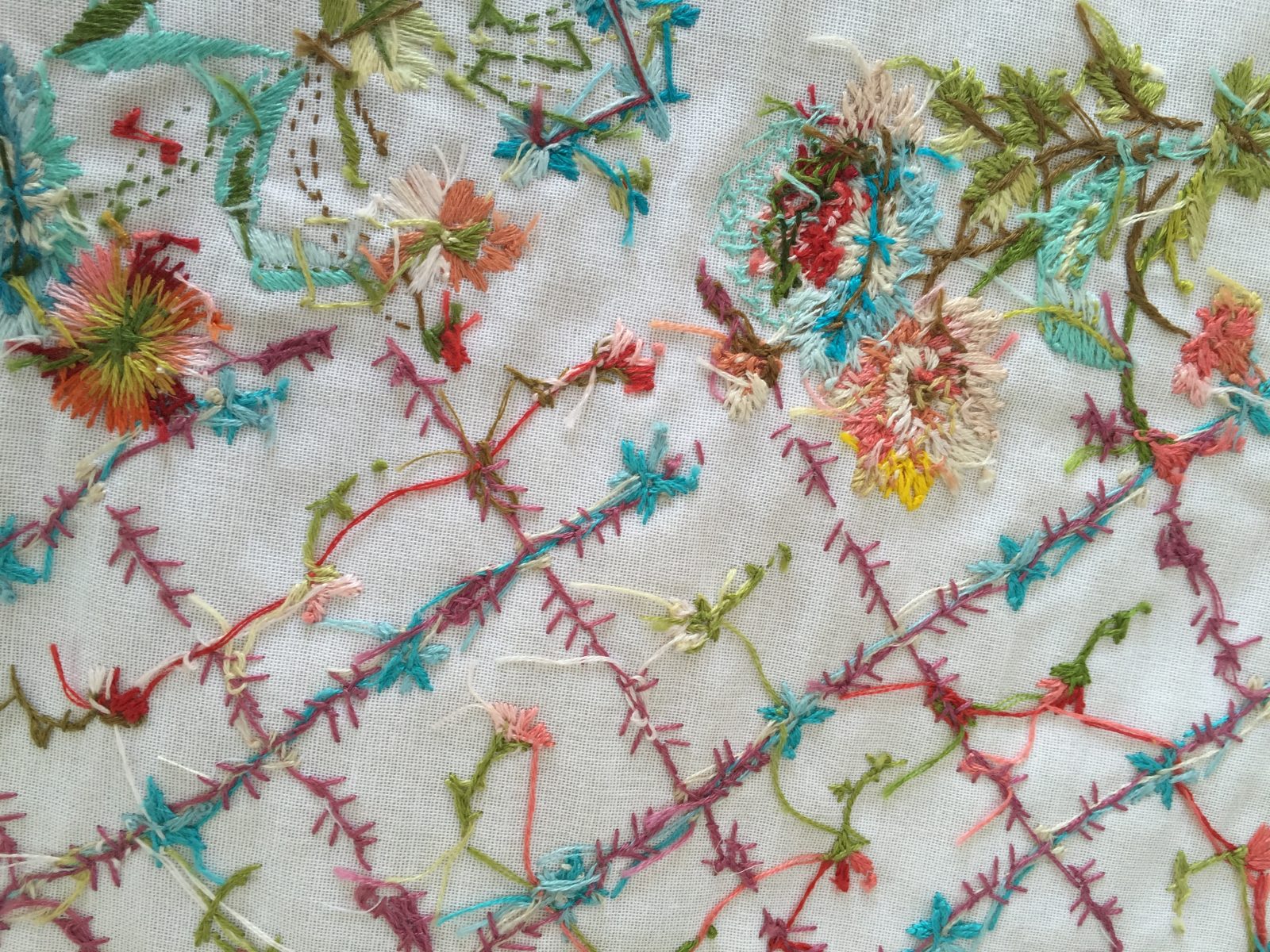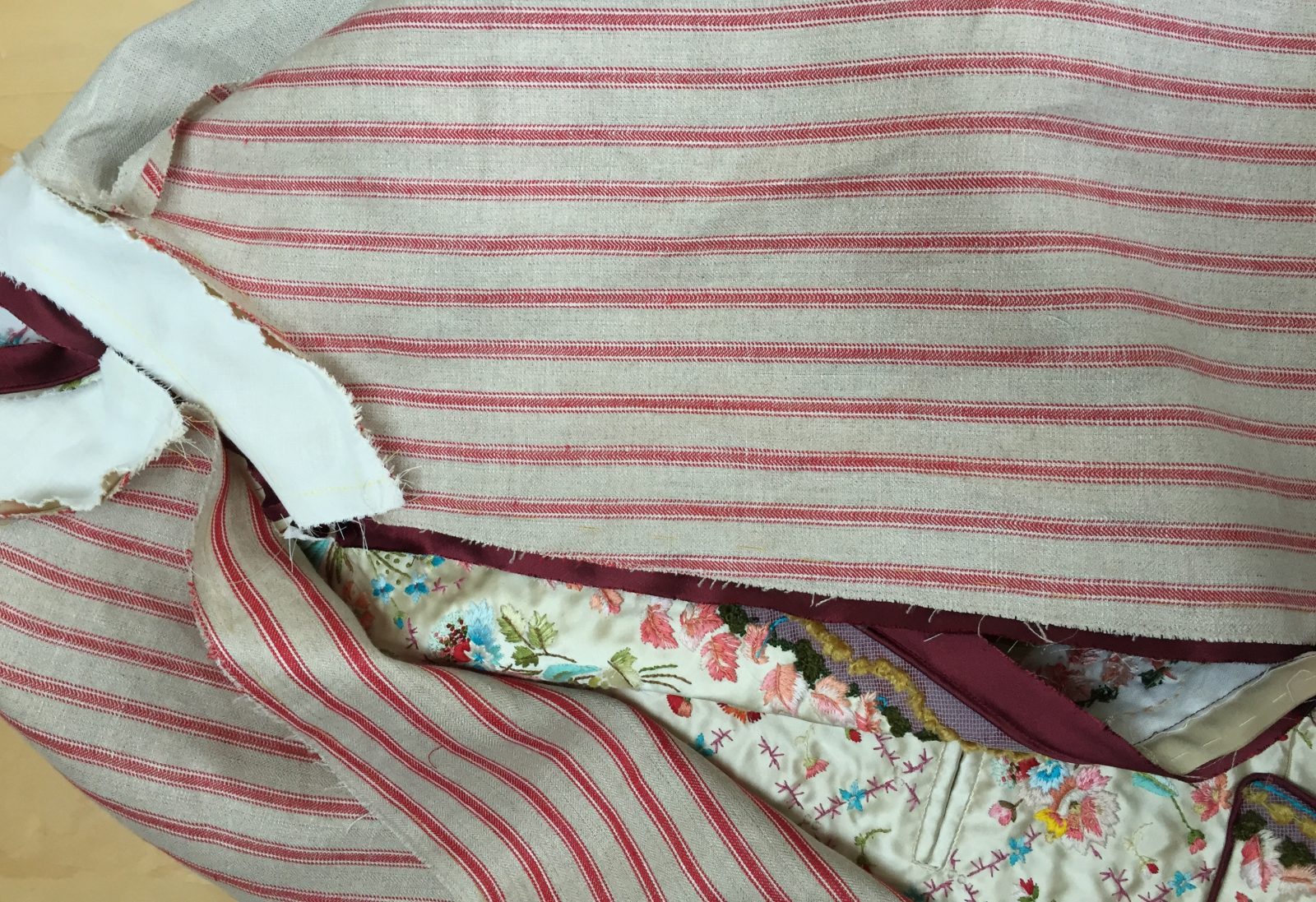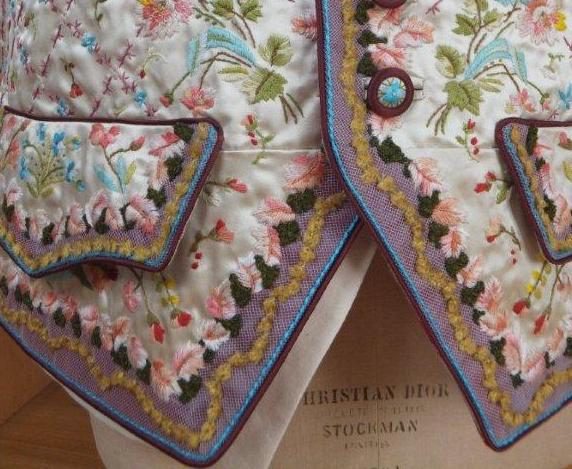The Making of a Waistcoat…
Typically the 18c man’s waistcoat had a silk front with the back and lining in linen. The cut of the front was straight and slanting away from below the waist, with a stepped stand collar, two pockets with exaggerated and curved flaps, and a faced back. The 18c preoccupation with the natural world was often evident in the elaborate decorative schemes on the front panels, the extensive hand embroidery with flowers and leaves in multicolour silks being typical.
A gentleman of style might have as many as 300 such waistcoats in his wardrobe. These beautiful garments were designed to reflect the wealth and status of the wearer and would likely have been made either by an embroidery workshop or by the ladies and/or servants of the house.
The modern day challenge was to reproduce a unique piece that continues to tell its story. Lucy Goffin was commissioned to create a contemporary version of the original, enlisting Barbara Kennington’s help with the complex task. Drawing reference from the waistcoat held in the V & A Museum archive that inspired Beatrix Potter’s tale of The Tailor of Gloucester, and from Beatrix Potter’s own delightful drawings (“no more twist…”), it became a fascinating and absorbing project.
The images above show Potter’s delightful illustrations of the waistcoat, samples and test pieces of the construction, the embroidery planning and execution, and the finished garment with its linen ticking lining.



